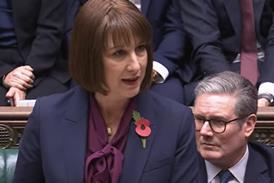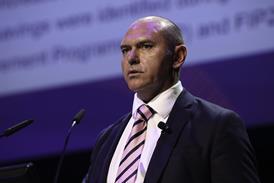The CQC has issued new draft guidance on factual accuracy process, but what does it mean for providers? Hope Davis-McCallion explains
It has been nearly two years since the Care Quality Commission’s last issued guidance on their factual accuracy process.
During this time, it has been noticeable to providers and solicitors who work in this field that inspectors tire of parts of the guidance.
It is purely at CQC’s discretion whether new information about action taken since the inspection will be included in the report
It should come as no surprise then that the CQC has issued new draft guidance for all providers on the process. But, have they improved the process for providers or simply changed it to make their lives easier?
Published earlier this year, the ‘factual accuracy checking process’ has been updated to allow providers to:
-
Challenge any information that is factually incorrect;
-
Tell the CQC where their evidence in the report may be incomplete.
This reasoning isn’t too dissimilar from their guidance issued in 2017, but closer inspection shows there are several changes within the draft guidance which providers need to be aware of. As the saying goes, the devil is in the detail.
The main changes have been summarised below:
-
Instead of being sent a Word document to complete the factual accuracy check, CQC will send an email to the appropriate registered person and this will include a copy of the draft report and a link to download a form to provide a response. The CQC says they “will not usually accept factual accuracy comments in any other format”. Providers need to be aware of this and ensure they tell the CQC immediately if they cannot respond using the form.
-
If any evidence is sent to support sections B and C of the document, providers must specify the page and paragraph number and highlight the exact wording in the document that is relevant to the point they are making. This point is particularly important as if this is not made clear, the inspector will need to ask the provider for it and if it’s not provided then the CQC has the powers to not consider the evidence further.
-
Providers can send the CQC information about action they have taken since the inspection that “addresses the concerns we raised with you, or which is included in the draft report”. It is then within CQC’s powers to decide whether to include this new information in the final report. However, most importantly, unless there are exceptional circumstances, this new information will not form part of the final judgment or ratings.
-
Despite previously allowing it, providers are not allowed to ask to see the inspector’s notes from an inspection or details of people the inspectors spoke with. A highly controversial issue to say the least. Inspection notes and details of people the inspectors spoke with form the main reasoning behind the draft inspection report. Why then, are providers not allowed to see the CQC’s main evidence behind the justification for the report and ratings? Ridouts would still challenge for notes under the relevant statutory provisions where they are pertinent to questions of reliability.
-
Providers cannot ask the CQC for information about workers who have reported concerns to them due to confidentiality.
The above changes may seem small but in practice could be onerous and taxing for the provider. For example, it will be a burdensome task specifying the details of the evidence referred to in the report, and one that can only benefit the person reading it.
It is purely at CQC’s discretion whether new information about action taken since the inspection will be included in the report. However, in the interest of the provider, will CQC explain the reasoning as to why they have or, more importantly, have not included the information?
As already mentioned, the exclusion of the inspector’s notes and details of the people the inspectors spoke to eliminates the provider from really understanding the justification for the inspector’s report and rating.
It is important to note that this is draft guidance following a consultation CQC ran last year. Providers need to keep a careful check on this and the changes to the process. It is imperative that providers challenge inspection reports where they dispute the findings, ensuring the report is accurate and a proper and true reflection of the service at the time of the inspection.
Providers need to keep aware that if inaccuracies are not challenged, they will remain in the report and be taken as fact. Information contained in inspection reports is available to the public and can be relied upon by CQC to help justify any future enforcement action.

















































1 Readers' comment